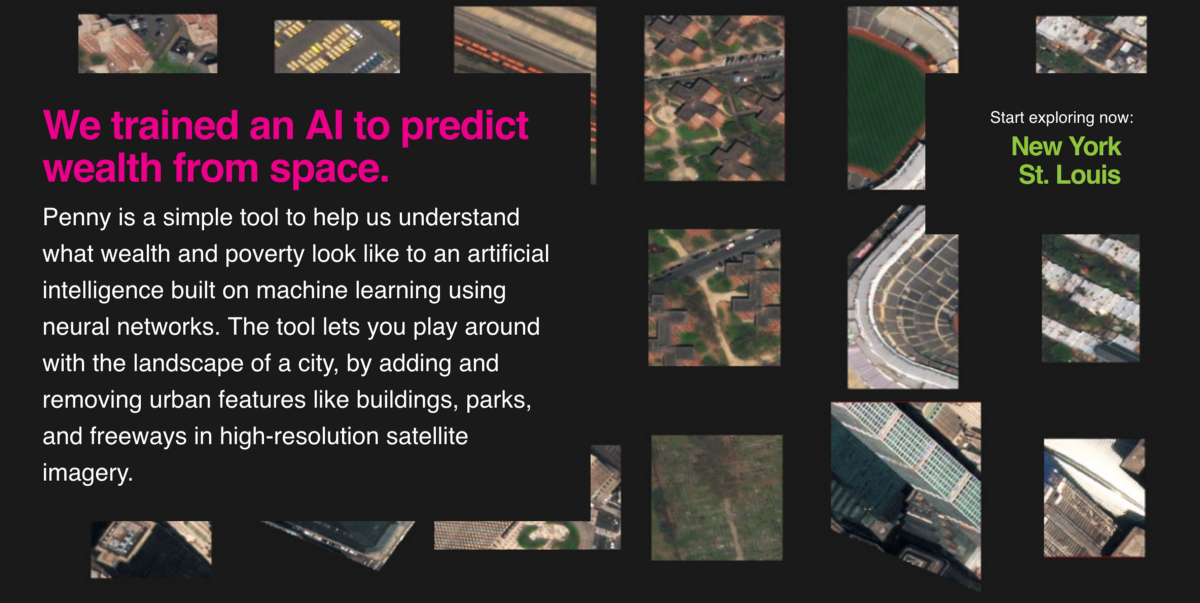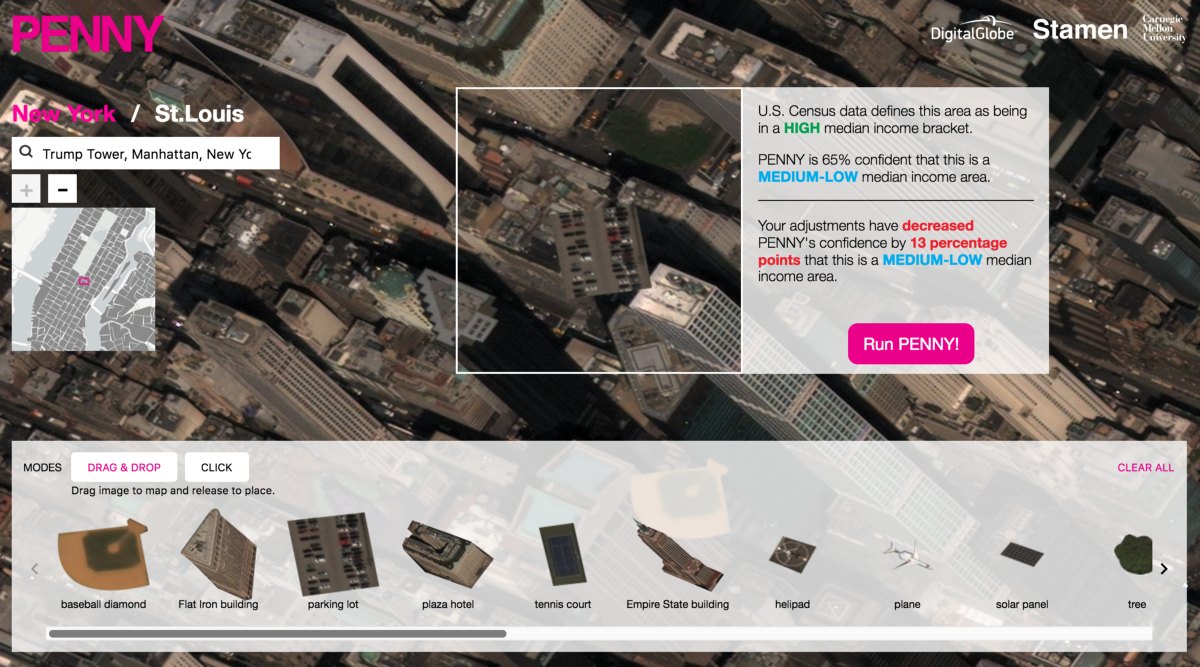There’s an artificial intelligence in the sky that is working on predicting your household income just by looking down at your house from space.
“Penny,” as this AI is playfully called, was built by us, with researchers from Carnegie Mellon University (one of them is Aman Tiwari and he is our intern this summer), using data from DigitalGlobe, which operates the world’s most advanced commercial imaging satellites.
Penny is a simple, easy-to-use, interactive tool built on top of sophisticated machine learning using neural networks. The tool lets users play around with the landscape of a city — at launch time New York City and St. Louis — by adding and removing urban features like buildings, parks, and freeways in high-resolution satellite imagery.
You can move the Plaza Hotel to Harlem and see how that affects Penny’s predictions. You can drop a parking lot in the place of Trump Tower. You can move the Gateway Arch to the St. Louis suburbs. You get the idea.
Users can explore how different kinds of features make a place look wealthy or poor to an AI — and in the process poke at the black box of machine learning, see what makes it tick, where it makes common sense, and where it might not.
“We’re hoping Penny provokes a lively conversation about how artificial intelligence is being used to make sense of our world,” says Dr. Jordan Winkler, Ecosystem Product Manager at DigitalGlobe and our client on the project. “Sometimes Penny sees the world just like we do, and sometimes quite differently, in sometimes useful, and sometimes curious ways. It’s as powerful as it is playful.”
Penny is an AI built on top of GBDX, DigitalGlobe’s analytics platform that allows developers to build products on top of the company’s high resolution satellite imagery. Penny uses neural networks, trained on census data and satellite imagery, to learn which features in the satellite images are correlated with household income. Penny can then independently predict household income based just on images, even when the images are manipulated by users.
Penny is one of the most exciting interactive projects we’ve had the good fortune to work on. The project shows both the promising power and worrisome pitfalls of giving more and more of our analytical thinking and decision-making over to artificial intelligence algorithms.
You can read more about Penny in this morning’s issues of Wired and FastCompany. We stealth announced the project at Space 2.0 back in April, for those watching the forward edge of AI and satellite imagery applied to commercial endeavors.
Say hello to Penny! More to come this summer.


